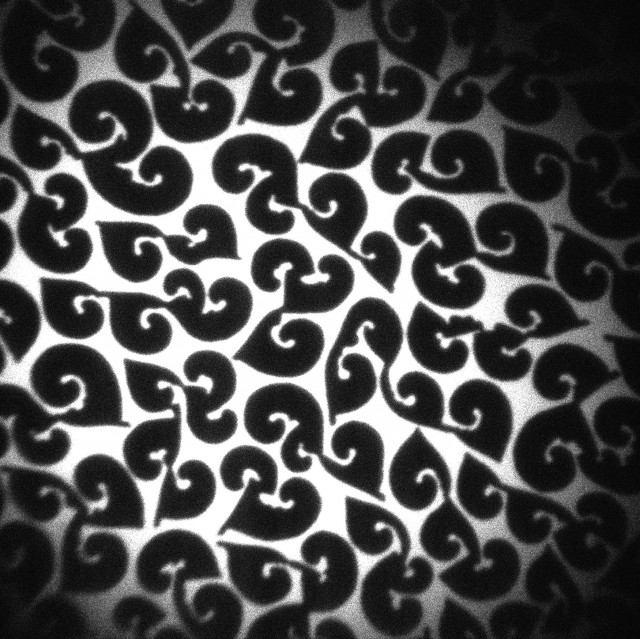
Morphology of phase coexistence in a lung surfactant monolayer
Description
This piece exhibits beautiful pattern-like figures in an abstract black and white style, similar to that of a tessellation. This image exemplifies the beauty of surfactant molecules, as they transition between liquid and solids states.
To make breathing easier, nature has provided a mixture of fatty molecules and proteins called “pulmonary surfactant” that coat the internal surface of our lungs in a layer that is one molecule thick (a “monolayer”). The presence of this monolayer reduces the surface tension inside the lung and facilitates breathing by reducing the energy required to inflate the lung. In the laboratory, breathing is simulated using an apparatus called a Langmuir trough, in which a moveable barrier can compress or expand a liquid surface. As the surfactant molecules are squeezed closer together, they tend to organize themselves into a condensed, solid-like structure. This image shows this process in action. Bright regions represent the surfactant monolayer in an expanded, liquid-like state, while the dark domains are condensed and solid-like. The shape of the dark regions is determined by the specific structures of the individual surfactant molecules. As the monolayer is further compressed and the molecules have less room, more of them join the condensed structures and the image becomes increasingly dark.










